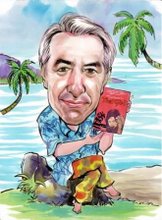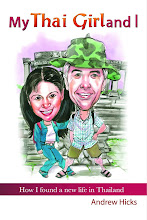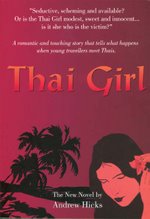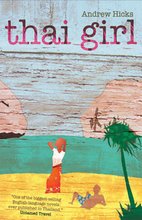
The 1985 edition by Duang Kamol

The book cover shows Aberdeen harbour, Hong Kong in 1957.

I took these pictures in Aberdeen in the late seventies.

What Ever Became of Jack Reynolds?
At the end of this blog there’s a serious request for information from you. I’d like to learn more about Jack Reynolds and to share what I discover in a later article… so please read on.
*****************************************************
Coincidentally I’ve just found copies of two out of print books about Thailand that I’ve long been looking for.
“A Woman of Bangkok”, the seminal novel by Jack Reynolds (first published in 1956 as,“A Sort of Beauty”), is a classic ‘Suzie Wong’ story set in fifties Bangkok, while “With My Back to the East” by Bernard Llewellyn published a year later is an elegant account by an established travel writer of his journey through seven South East Asian countries, including Thailand.
The first one I found in Gecko Books in Chiang Mai, surely Thailand’s biggest second-hand bookshop, while the Llewellyn was found for me by a sharp eyed friend in a second hand book shop in Bangkok.
A curious link between the two books is that much of Llewellyn’s chapter on Thailand is about how when in Bangkok he stayed with his old friend Jack Reynolds and how they travelled up to Korat by jeep together.
For me there’s a more personal link as well.
When I was lecturing in law at Hong Kong University in the late seventies, Bernard Llewellyn, then working for Oxfam, used to come and stay with me in my spacious university flat overlooking the western approaches in Pokfulam and became a good friend. Perhaps it was in character that he never talked about his books and this is the first time I‘ve managed to find one of them.
I mentioned Bernard’s name in a recent article on this blog about my volunteer work with Oxfam (‘Can Oxfam Really Help Thailand’s Poor?’, 22 August 2009) and such is the power of the internet that his now middle-aged son, Michael, then emailed me to get in touch. Bernard had published four travel books and Michael told me that he was working on a fifth not so long before he died aged 88 in 2008.
This unpublished book covers much of his active life from the time he joined the Friends Ambulance Unit in China during the Second World War, through his first travels in the East until his retirement from Oxfam in the 1980s and so it should be a fascinating read. Michael has now sent me a pdf file of the book and I am much looking forward to printing it out and reading it. Bernard’s obituary can be found in The Guardian of 24 June 2008. (And sadly that of another Oxfam friend who was with the Friends Ambulance Unit, Michael Harris was published in The Independent on 8June 2009.)
I’ve also long been curious to read Jack Reynolds’, “A Woman of Bangkok” as it is celebrated as the first of the many ‘expat’ Bangkok novels written by and about western men falling for and foul of rapacious bar ladies in this, the Land of Seductive Smiles.
My own solo novel, “Thai Girl”, the story of young British traveler, Ben who gets entangled with a pretty beach masseuse called Fon, has been described by one reviewer as ‘the definitive novel about relations between Thais and foreigners’.
Others say that this accolade should instead go to Jack Reynolds’ story, even though it’s now already half a century old. I’ve seen comparisons made between the two novels in discussions on an internet forum, so I was very curious to see what I’d think of his book.
“A Woman of Bangkok” is the story of Reginald Ernest Joyce, a virginal and mildly irritating twenty five year old Englishman who sells vegetables in a grocers’shop. The guilt ridden son of a rural vicar, he only comes to life, it seems, when he races motorbikes on the speedway track. Could it be coincidental then that Jack Reynolds likewise rode speedway and was the son of a vicar? I’ve read too that Reynolds’ real name was Emrys Reynolds Jones which bears more than a passing resemblance to Reginald Ernest Joyce.
The story starts when lettuce seller Reginald is jilted by his girlfriend, Sheila. She, the hussy, then gets off with his older brother who is clearly more of a man than he. Reggie then takes up a three year contract as a commercial salesman based in Bangkok where he falls defenseless into the clutches of the self-styled ‘White Leopard’, the eponymous ‘woman of Bangkok’. A bar girl of the most mercenary kind who mercilessly parts him from his money, she is soon to be the cause of his disgrace and sudden return to England at the end of the book.
Though much in the book could be autobiographical, Reynolds paints Reggie as a misfit who fails at everything he tries to do, including suicide and seducing Sheila. The critical turning point in his life when he fails to screw his courage to the sticking point is lyrically told by him in the first person as follows.
“Oh, Sheila, Sheila, Sheila. Lying there moaning in the heather. My hand on your heart. My hand under your head. The odour of your hair and skin, as sweet as the heather. Your tense repeated cry: “No Reggie, no. Don’t do anything we’ll regret – please…” I got up and walked stiffly (?!?) twenty feet away. I shouldn’t have been so soft. In fact I was a fool. I let her appeal to the Ivanhoe in me, the medieval Sahib.”
Big brother then apparently seizes both the initiative and Sheila and drags her off to the altar, leaving Reggie twisted and bitter towards women and life in general. Later Sheila tells Reggie that after he’d left her moaning in the heather, “you came back looking all noble like Sir Galahad and no doubt with a new poem in your head”. Reggie replies, “What did you expect me to do – rape you?” “Why not?” says the feisty Sheila.
Reggie rages thus. “Half the human beings in the world are female. The breed is produced by the busload. Billions of the bitches. And every one of them stamped in the same press.”
Thus in the world according to Reggie, when a euro-sheila says no she really means yes, but he soon discovers that certain Thai women in bars know the precise meaning of ‘yes’ if adequately compensated.
Reggie is thus bedeviled by his Christian guilt about sex, torn between perceiving women as bitches in need of a mate and as unsullied beings to be wooed according to the conventions of courtly love. As an outlet for his frustration Reggie has angrily penned a novel called “Perfidy” about how a perfect gentle knight such as he is done over by perfidious women. It expresses ‘the rage of a jilted lover’, says Reggie. It is ‘an outpouring of rage’, full of ‘plummy writing. Over-ripe Victorias. Every semi-colon is like a plum stone in a plum pie’.
The only difference is that while Reggie tore up his fledgling novel in fury, Jack Reynolds got his successfully published.
Thousands of readers have thus since learned that Reggie had a middle-aged landlady in London who took a big shine to him and he, it appears, to her fifties-style legs. In Reynolds words, her calves ‘twinkle fawn-stockinged between this evening’s particular flowery voluminousness and her run-over-at-heels but meticulously-polished shoes.’
The style of the book is sometimes elegant but even for its time is sometimes seriously over-written and slow. My writers’ group back in Exeter would have hammered it for its plummy writing and adjectival retentiveness.
As the story unfolds in Thailand, there’s a premature climax (if I may call it that) when Reggie goes on his first business trip to Korat by jeep with his Thai colleagues and they go to a local pick-up joint. While the Thais freely indulge, Reggie fights shy and goes home, only to slip out and later return to the scene. There at last he loses a few baht and his innocence.
“My pistol-butt is no longer un-notched; my belt is hung with scalps,” he boasts. In this, his first short trip to Isaan Reggie then manages to collect another seventeen ‘scalps’.
Bernard Llewellyn in “With My Back To The East” writes as follows of his own trip to Korat by jeep with Jack.
“We ate that night in one of the restaurants across the water. It was the place – so Jack said, and he should have known – where Ronnie (sic) Joyce, the long-suffering hero of his novel, and his friends had their hilarious meal preparatory to the loss of Ronnie’s virtue in the Korat back streets.”
Once back in Bangkok, Reggie falls into the clutches of Vilai, ‘the White Leopard’ at a dance hall called the Bolero, but sadly for Reggie Vilai is unutterably vile.
Reggie is soon besotted though and meekly reaches for his wallet at her every demand. She bleeds him dry, trying every trick in the book, a money-Dracula of the worst kind, without any redeeming features or even any apparent charm.
Reynolds takes pains to make her as detestable as possible and lacking in any positive human qualities. She spends three to five hours every day putting on her makeup and tarting herself up for the night. Her great pleasure in life is plucking her arm pits with tweezers. She pisses on the shower floor instead of in the squatter. She is despicably unpleasant to her servants and anyone beneath her and, what’s worse, she kicks the little puppy.
Just after a fortune teller has predicted his death, her small son is hit by ‘a long green beautiful car’ which ‘moved with the silent deadly stealth of an arrow’. Reggie then scoops him up, badly injured, and puts him on the back seat of his car. Reluctant to sit in the back with him as he’s dirty from rolling in the road, Vilai strongly resists taking him to a hospital as she wants to get ready for work at the Bolero. It’s Saturday night and there’ll be lots of American there.
When Reggie insists on taking the child to the hospital, she extracts a pile of money to pay the doctors’ fees. She then goes off to the Bolero and when the boy dies she blames Reggie for killing him as he took him to a hospital that would never care for him properly. She then makes him pay all the funeral costs.
Later when Reggie has just driven up to Korat on business, she sends him a telegram to say she’s in serious trouble and needs him to come back urgently. Despite being exhausted after the long drive, he then immediately abandons his colleagues and his work and in torrential rain and in the dark heads back to Bangkok in the firm’s jeep to find her. In consequence he has a bad crash and nearly kills himself.
When he finds Vilai, she slags him off for coming to her house covered in mud and gore, demands a huge sum of money from him to deal with some unspecified crisis and when he says he hasn’t got that much, tells him he’s lying. He’s not good to her like he was before, she says, and she’ll never speak to him again if he doesn’t come up with the money.
Knowing that he’ll now lose his job for going absent and wrecking the jeep and having no money to give to Vilai, he decides to go that night to his boss’s house and to steal his wife’s jewels for her. There’s then a melodramatic scene in the last few pages when he takes a samlor from the Giant Swing to the National Stadium, then a tram (not the Skytrain) past the British Embassy to the house in Bangkapi. There he creeps up to the darkened house and goes inside, contemplating murder if it’s necessary to get the jewels for Vilai. Surprising the poor lady sitting in her bedroom in front of her mirror in a pink nightdress, his boss walks in and the game is then well and truly up for dear Reggie.
By this stage I wasn’t too bothered about what was going to happen to Reynolds’ protagonist anyway as both Reynolds and Reggie had lost the plot as far as I was concerned. I fully accept that bar ladies may sometimes be single minded in their calling and that western men can be extraordinarily naïve, especially when fixated on rescuing a whore with a heart of gold. In my view, however, the extent of Reggie’s fixation for Vilai pushes the bounds of credibility too far, given that she is just so very vain, vile and obnoxious. As described, she gives off no great erotic charge and does nothing to explain the extraordinary hold she has over Reggie in the face of her grotesque treatment of him.
Much of Vilai’s dialogue is cleverly written, authentic and funny, but top scoring bar girls have charisma and charm while Vilai has very little. It’s evident that she’s already over the hill and getting past her screw by date too, so she’s not even very attractive any more. Occasionally she turns on some crocodile tears and plastic affection to manipulate poor Reggie but she is otherwise without any redeeming qualities. Nor, apart from three feckless husbands in her past, does Reynolds explain what has made her such a demon.
There is brief mention of her past as a village girl fondly remembering better times, but that is perhaps universal for those who seek a better life in the city. As a character with a single dimension, she is for me, a cardboard cut out whose exaggerated persona is over the top. ‘Money [is] the most important thing in the world’ for all bar girls but they have to be nicer than this to get it.
Despite its many qualities, the story therefore did not work too well for me. I could not suspend disbelief. While Reggie is a well developed character, even if not a sympathetic one, Vilai is merely a clever caricature. While many of the details about Bangkok and Thailand in the fifties are well observed, again they are hardly affectionate or positive, which is strange as Reynolds must have loved the place.
I’m sure that for a western man who’s been devoured whole, wallet and all, by a bar girl, this book says it all, but frankly it wasn’t for me. It struck me it was not so much about the ‘woman of Bangkok’ as about the post-Christian complexes of poor Reggie, crucified both by Sheila who said no and by Vilai who’d say yes for money but could never return his love.
The book is therefore quite unlike my own novel, “Thai Girl”, which is about Ben’s struggle to understand the Thai girl, Fon. Thus he talks to her at length about her childhood of poverty in Isaan and insists on going to her home in Buriram to meet her Mama. Unlike Vilai, Fon is not a bar girl and persistently says no to Ben, so there are major differences in the two stories. They are comparable perhaps because both explore relationships between foreigners and Thais, but in very different ways.
They end differently too. While Reggie’s DC6 takes off from the airport in Bangkok on the last page of the book, on the last page of “Thai Girl” Ben’s jumbo jet lands in a wet and dismal London.
Nonetheless, “A Woman of Bangkok” is a remarkable period piece that makes me more than curious about its author. Banned, it’s said, in Australia, it must have taken great courage to write and to publish it. In an era when Lady Chatterley and Fanny Hill were being prosecuted for obscenity, a story about prost****ion and men having s*x with the n*tives just really wasn’t the done thing. But is it a great book?
In my own view there are few really fine novels, such as Greene’s, ‘The Quiet American’, but many bad ones like ‘Moby Dick’, ‘The Davinci Code’ and those endless Barry Potter books. Of the rest you may either enjoy them or be disappointed and Reynolds’ book is one of these. I enjoyed it as a period piece and because it was about Thailand but nothing more.
Nonetheless, I’m intrigued to learn more about the life of Jack Reynolds. I know that he was a conscientious objector and during the Second World War was with Bernard Llewellyn in The Friends Ambulance Unit in China. This expertise in transport presumably brought him his job with Unicef in Bangkok.
Little bits of information about him keep surfacing. Enjoying a beer at Kinnaree with Jerry Hopkins in Sukhumvit soi 8 the other evening, Jerry told me that Reynolds had lived in that very soi. He’d written for The World, then the only English language paper and the internet tells me that he had a book of stories about his experiences in China called, “Daughters Of An Ancient Race” published by Heinemann in 1974.
Llewellyn’s book says that Jack was married to a Thai village girl who spoke no English and didn’t enjoy her visit to England. At that time he had two sons called Philip and David, and another on the way. Other accounts credit him with between seven and nine children, though perhaps even he didn’t know the score. The children must be in their fifties today but where are they now? Has the book finally gone out of print because it’s an embarrassment to them? Reynolds is said to have died twenty years ago but again I can find no details as to where or when.
On one of the internet forums, an American called Jim Shaw who’d worked with him on ‘The Investor’ in the period from 1970 to 1975 said recently that after losing touch with him he’d visited soi 8 sometime in the eighties to try to discover what had happened to him but he’d learned nothing. (See www.tfs2m.com). And so the plot thickens.
Though Reynolds pre-dates the internet era, Google searches turn up quite a few results on him but many of these ask the same question as this article. Who was Jack Reynolds and what ever happened to him and his many children?
So can you tell me anything more about Jack Reynolds? If so do please post a Comment on this blog or contact me at arhicks56@hotmail.com.
What was his real name and the surname of his children? How and when did he die? Can you give details of your copy of his book with names, publishers etc? And did the novels Bernard says he was working on when he visited ever see the light of day? It would be good to compile a simple bibliography of his writings.
In the fullness of time I will then try to put together a summary of what I’ve learned and to post it on this blog. If enough is reliably discovered, perhaps it should go on Wikipedia.
It should be perfectly possible to discover what happened to Jack Reynolds but only with your help!
**********************************************************************************
Incidentally, I’ve just learned that a fine early copy of Reynolds’ book in its original dust jacket is available at the Librarie du Siam et des Colonies which is near Pantip Plaza. It isn’t cheap but you could email cgsiam@cgsiam.com to secure it. .
Andrew Hicks The ‘Thai Girl’ Blog November 2009





























